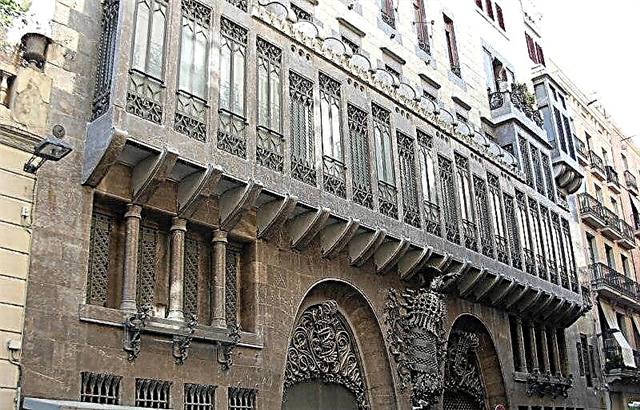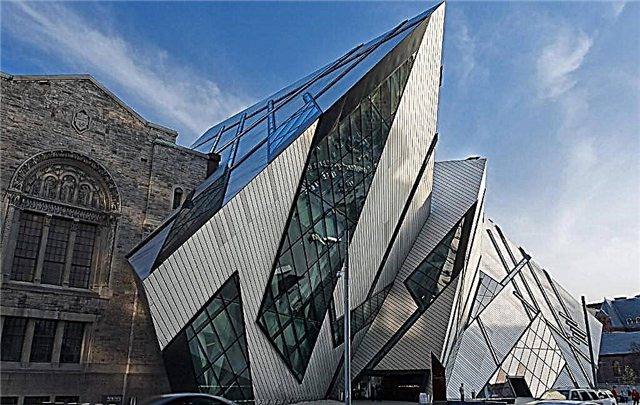Address: Moscow, st. Vavilova, 57
Foundation date: 1907 year
Creation initiator: A. F. Coots
Coordinates: 55 ° 41'26.3 "N 37 ° 33'41.3" E
Content:
Permanent and temporary exhibitions of the Darwin Museum are devoted to the origin of life, the course of natural selection and the evolution of animals and plants on the planet. Unusual collections stand out among other museums in the capital and are especially loved by Muscovites and tourists. Rich funds and interactive exhibits make a visit here a real adventure.

Darwin Museum building
Museum history
The Darwin Museum was created at the beginning of the last century through the efforts of a talented young zoologist Alexander Fedorovich Kots, who from a young age was fond of collecting natural science exhibits. The scientist biologist was an experienced taxidermist and knew how to skillfully make stuffed animals and birds.
The new museum is based on Kots' home zoological collections - exhibits brought by him from expeditions across Russia and bought abroad. In 1907, the museum was located in the zoological laboratory of the Higher Courses for Women in Moscow, where Cotes gave a course of lectures on Darwinism. At that time, it was the only museum in the world dedicated to the foundations of the doctrine of evolution.
It is noteworthy that the museum staff did not stop their work even in the difficult years of the revolution and civil war. Despite hunger, material needs and lack of heating, they continued to conduct scientific research, compiled teaching aids and made new stuffed animals and models. In 1922 the museum received the status of a state institution.

A. Kots served as director until 1964. The complex of buildings in which the museum is located today was built in 1995.
Best way to explore the Darwin Museum
The main building of the museum has 3 floors, and the exhibition building has 7 floors. Both buildings are connected by an underground passage. You can start the inspection from any of them, since there is a single ticket for the entire territory.
The Darwin Museum is easy to navigate without a guide. On the basement floor there is a diagram of the halls, and signs hang everywhere. The ticket office sells inexpensive booklets on how to explore the museum with a baby and which exhibits are worth staying near. This information is very helpful for those parents who brought their children to the Darwin Museum for the first time.
On three floors of the main building, you can see showcases with skeletons and stuffed animals and birds, dummies and animated models. Each room has large screens showing films about nature. Children are delighted with audio systems that reproduce the growling of animals and singing birds, as well as funny multimedia elements "living scales" and "singing bumblebee and frog".

Arriving in the main building, with children it is worth looking into the center "Know yourself - know the world". On the ground floor of the building there are 52 multimedia complexes, and here the child can easily find something interesting for himself. At the interactive center, he can see the world from a bird's eye view and see how objects look from the point of view of a tiny field mouse. Children are happy to answer riddles about nature, walk on the glass floor, measure their strength with an elephant and listen to the heart of the smallest bird in the world - the hummingbird - beating.
In another building of the museum, each floor is set aside for a new thematic exhibition. With preschoolers and schoolchildren, it is worth looking at the 4th floor of the building, where the interactive exhibition "Walk the path of evolution" is located. This is the place where children go on an extraordinary journey and travel to the distant past of the planet.
Answering questions and following the labyrinths of evolution, young guests of the museum will learn when different types of living beings appeared on Earth. On display are trilobites and a mammoth tooth. Through transparent windows in the floor, children can see footprints left by baby dinosaurs and ancient fossils.

Installation "Living Planet"
The spacious central hall of the main building of the museum attracts most of the visitors. The reason for this interest is in a unique installation that shows the history of the emergence of our Universe and the birth of life on Earth. The three-dimensional image, light and sound effects turn the walls of the large hall into a giant "living" screen for 20 minutes. A breathtaking panorama opens up from everywhere, and you can see the colorful installation from any floor.
Paleopark
Several years ago, a spectacular exposition was created in an open area near the museum, which was called the Paleopark. If the weather is good, many parents do not limit themselves only to a tour of the museum, and be sure to bring their children to the green courtyard.
Here are full-sized models of extinct animals. The attention of children is attracted by the Amurosaurus, mammoth, mastodonosaurus, cave lion, keelsk, woolly rhinoceros, estemmenosuchus and fossil fish panderichtis that lived many millions of years ago. The mockups are very realistic and the animals feel alive. They make such a strong impression that small children begin to believe that they are in the ancient world.

Between the models are planted relict species of plants that covered the Earth in the era of dinosaurs and have survived to this day. These are rare species of ferns, conifers and the ginkgo tree. The Paleopark has comfortable walking paths, benches and lanterns.
Programs for children
The Darwin Museum is one of the most popular museums for children in Moscow. Its employees organize interactive programs for preschoolers and schoolchildren. On weekends, themed excursions are held in the museum halls, and young visitors can learn a lot of interesting things about the life of ancient man and animals from Russian folk tales.
Kids quickly get tired of walking through the halls, so a children's play corner is open for them in the hall on the 3rd floor. Students who are interested in biology come to the museum after school. They attend classes in the biological circle, the Bionic-Lab Center for Youth and the studio of young animal painters.
Children brought to the museum by their parents take part in master classes with pleasure. In the classroom, they learn the basics of pathfinding and work with real microscopes. During master classes, children are introduced to mushrooms that grow in forests and forest edges, and insects that live in our country.

Parents with children love to come to the museum for mass holidays on the Day of Environmental Protection, International Days of Water, Earth and Birds. Funny birthdays and entertaining quests are held in the halls of the museum. And teachers of nearby schools bring their students here for entertaining biology lessons.
The museum has a cinema lecture hall and a multimedia center "EcoMoscow". This is the place where anyone can get the most complete information about the environmental problems and nature of the capital and the Moscow region. In addition, the multimedia center provides fun interactive activities for adults and children.
Useful information for visitors
For guests, the doors of the museum are open on Tuesday, Wednesday and Friday through Sunday from 10.00 to 18.00, on Thursdays - from 13.00 to 21.00. Children under 7 years old are admitted here free of charge. It should be borne in mind that the box office ends up selling tickets half an hour before closing.
The Living Planet installation can be viewed from Tuesday to Friday at 16.00, and on Saturday and Sunday at 12.00, 14.30 and 16.30. In summer, the installation is available from Tuesday to Friday at 14.00, and on Saturdays and Sundays at 12.00 and 16.00.

On weekends, when there are many visitors to the museum, parents with children are advised to start their tour from the exhibition building. There are always fewer people in dressing rooms and toilets.
If the walk through the museum took a long time and the child is hungry, don't worry! On the basement floors of the main and exhibition building there are places to eat.In the cafe located in the main building, they serve lunch, and in the cafe of the exhibition building they come to drink tea or coffee with sweets and fresh pastries.
How to get there
The museum stands near the intersection of Dmitry Ulyanov and Vavilov streets. It is not difficult to reach it on foot from the Akademicheskaya metro station. Trams No. 14 and 39 and buses No. 57, 119, 434 and 529 stop near the museum.











